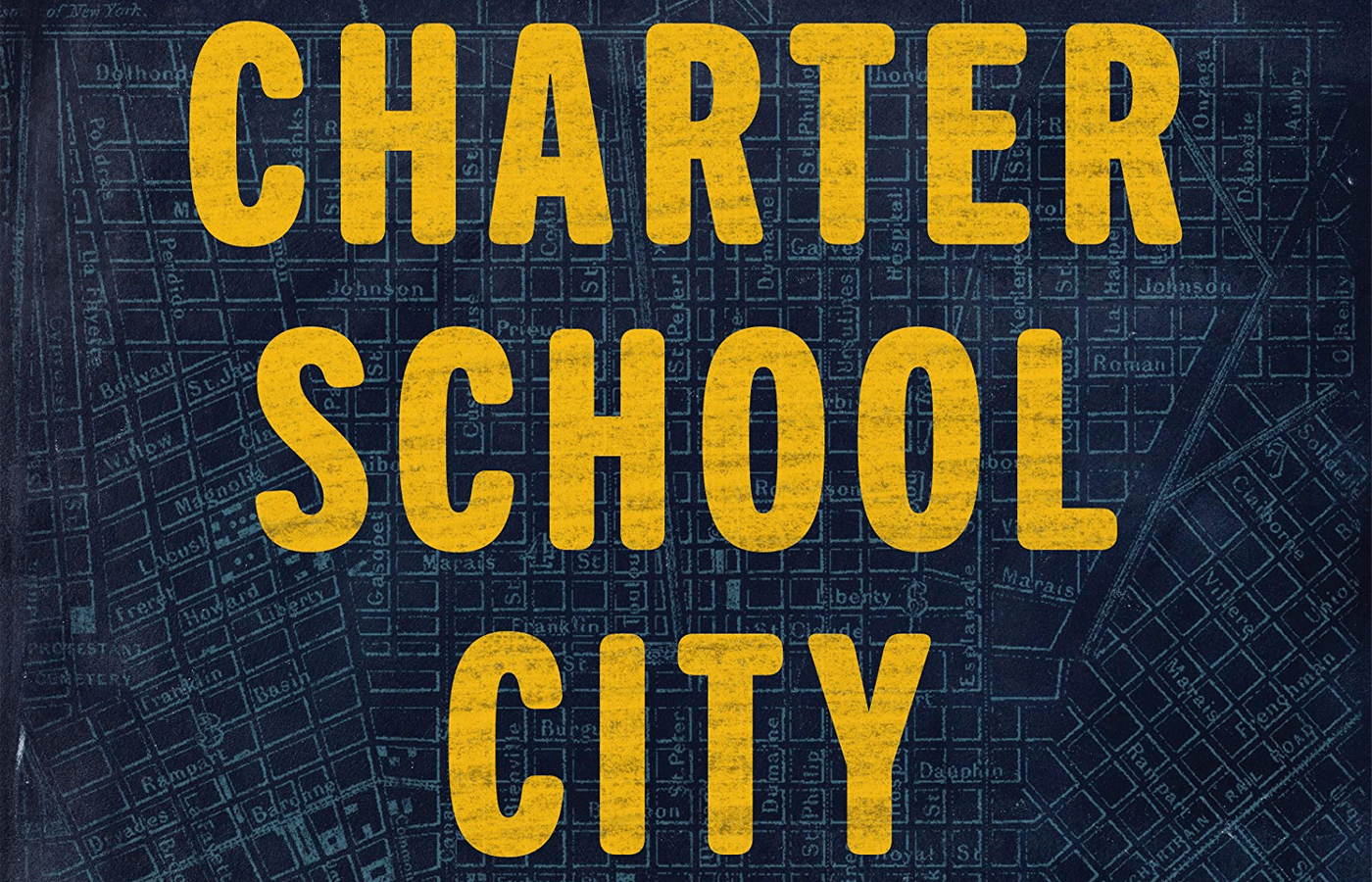Across the country, children in urban districts are being denied rich, rigorous educational opportunities. The causes of these poor opportunities are multifold: urban students suffer from high rates of poverty and violence; additionally, as a country, we do not develop enough teachers who can succeed in these difficult conditions. But, contrary to many leading reform voices, progress on the important issues of poverty and talent will not be enough to reverse the dysfunction of urban school districts. Poor educational opportunities will remain the norm unless we tackle one remaining issue: the structure of urban school districts.
The structure of urban school systems has made a mess of the relationships between family, educator, and government. Families have little power. Educators are trapped in a Kafkaesque maze of contracts, rubrics, and rubber rooms. And government is tasked with the overbroad mandate of both regulating and operating schools.
How do we right these relationships? My hypothesis is that we should transition our public education systems into charter districts, systems with the following structure:
· Educators form nonprofit organizations to operate schools.
· Families can choose from any school in the city, with reasonable limitations, such as neighborhood set-asides, being determined by community values.
· Government holds nonprofit school organizations accountable for both performance and equity; it no longer operates schools itself.
The Nation’s First All-Charter School District
New Orleans is the first city to build an education system based on these three principles. As a result, student achievement is on the rise; equity is increasing; and New Orleans citizens strongly back the reform efforts.
Before Hurricane Katrina decimated the city and most of its schools in 2005, 64 percent of public school students in New Orleans attended a school designated as “failing.” Currently, only 9 percent of students attend failing schools. High school graduation rates have increased by more than 20 percentage points, from below 50 percent to more than 70 percent. And, in 2013, a study by the Center for Research on Education Outcomes (CREDO) found that New Orleans charter schools deliver five months of extra learning per year when compared to similarly situated traditional schools.
New Orleans’s most at-risk students are also benefitting from the new system: CREDO found students with special needs achieve nearly two months of extra learning per year. And, despite New Orleans schools serving an extremely at-risk population, the expulsion rate is below the state average. Performance increases have not been achieved by ignoring equity; rather, New Orleans has become one of the most equitable urban school districts in the country.
Not surprisingly, voters surveyed in 2014 by the Cowen Institute at Tulane University agree, by a two-to-one margin, that the schools are getting better. And 82 percent of voters want the state intervention, which has enabled the system’s structural transformation, to continue for at least two more years. Yet, while New Orleans has seen unprecedented gains in student achievement (see Figure 2), the city’s schools are far from excellent. Much remains to be accomplished. Nonetheless, the city has been undeniably and positively transformed by the structural reform of its public education system.

Confusing Structure with Rules
My colleagues in Washington, D.C. (see “D.C. Students Benefit from Both Sectors,” forum, Spring 2015) contend that the best educational model is one in which charter schools coexist with traditional district schools. The main thrust of their argument is that they prefer the rules that currently govern district and charter schools in Washington, D.C., over the rules that govern the New Orleans charter system. They argue that neighborhood traditional schools should coexist alongside charter schools of choice; that charter schools should be able to benefit from special enrollment rules, such as not admitting students midyear; and that districtwide policies in areas such as expulsion should be avoided.
These arguments confuse structure with rules. A charter district can operate under a variety of regulatory regimes. Different rules concerning geographic boundaries, enrollment, expulsions, and admissions can be applied to a charter district based on a community’s values. Moreover, the same rules need not apply to every school. For example, a city might desire a mix of neighborhood and citywide choice schools; if this is the case, city leaders could regulate their charter district in this manner.
In New Orleans, we designed a set of rules to govern our charter district that reflects our community’s values. Elementary schools can allocate up to 50 percent of seats to students within a defined neighborhood, while high schools have no geographic boundaries; all open-enrollment schools with available seats must admit students at any time of the year; selective schools can employ test-based admissions; and expulsion policies (but not all discipline policies) are standardized. Currently, 72 percent of New Orleans parents voice support for this specific choice model.
These are by no means perfect rules. They are simply the rules New Orleans has designed to govern the city’s education system. Moreover, under these rules, the diversity of New Orleans schools continues to increase. Allowing some geographic preference has not forced every school to adopt the same model; the “one size fits all” days of old have not been brought back. From language-immersion schools to blended-learning schools to selective magnet schools to socioeconomically integrated schools, innovation is on the rise. Sound regulation has not led to homogenization. The exact opposite is true.
The point is this: structure and rules should not be conflated. A charter district can operate under any number of regulatory models as long as the basic structure is maintained. Washington, D.C., or any other city, can harness the benefits of a charter district structure while still maintaining a set of rules that meets the needs of
the community.
Confusing Better with Optimal
My colleagues also argue that the coexistence of charter and district schools has led to academic increases across both sectors in Washington, D.C. This is true. As a result of the impressive leadership of Michelle Rhee and Kaya Henderson, the traditional sector has indeed improved.
But there’s another way to interpret the Washington, D.C., reforms. The district, with the traditional and charter sector each serving about 50 percent of students, is as close to a systemwide experiment as you can get in a dynamic education environment. What happens when the best of district reforms take place alongside the best of charter reforms? A recent CREDO study found that students who attend charter schools in Washington, D.C., achieve roughly four months of extra learning per year. Moreover, the charters are achieving these results for less money per student than the district schools.
All boats may be rising, but too many kids are still sinking. We have witnessed what the best of district reform can give us. And we have seen that, even with talented district leadership, charters can give us better.
New Orleans and D.C. Charters Are Not Aberrations
A large body of evidence supports the notion that charter schools will deliver better outcomes for at-risk students. The 2013 CREDO study covered 95 percent of charter students in the country. The study found that African American students in poverty who attended charter schools achieved nearly two months of extra learning per year relative to their district school peers. CREDO has conducted similar studies in urban areas across the country, most of which have demonstrated that students learn more in charter schools than in traditional schools. And, in numerous cities, such as New Orleans, Newark, Boston, Los Angeles, and Washington D.C., the impacts are on the order of 4 to 12 months of extra learning per year.
Ignoring these results comes with the same risks as ignoring other scientific findings: those who are most vulnerable to bad policy will suffer the most. In this case, as in most cases, those most vulnerable are those living in poverty.
The Future of Urban Districts
Structural reform is not a silver bullet. We should provide additional income to families living in poverty. We should invest in the improvement of teacher recruitment, preparation, and compensation. But these changes will not be enough. To provide children with the educational opportunities they deserve, we must tackle the structure of urban school districts.
New Orleans overhauled its public school structure by transitioning to a system where nonprofits operate schools and government regulates the system. In doing so, it has developed a set of rules that ensure that charter schools eschew inequitable practices. Unlike my colleagues in Washington, D.C., I do not believe that charter schools should play by different rules than district schools. Governance status should not shield inequitable practices. New Orleans provides evidence that charter schools can maintain superior performance even when they are subject to many of the same rules as district schools.
Yet, given the current limits of our knowledge, I do not believe all urban districts should transform into charter districts immediately. Rather, the next phase of the work should be focused on learning how best to build these systems. Ideally, within a decade, 5 to 10 additional cities will make the transition to all charter systems. From these cities we will learn what works, what does not work, and whether structural change continues to deliver performance gains across a variety of contexts.
Transforming the structure and performance of urban education systems will not, and should not, happen overnight. Radically overhauling complex systems entails significant risk. But change can happen over time. New Orleans has transformed its education system for the better. Other cities should follow.
This is part of a forum on charter schools. For an alternate take, please see “D.C. Students Benefit from Mix of Charter and Traditional Schools” by Scott Pearson and John H. “Skip” McKoy.
This article appeared in the Summer 2015 issue of Education Next. Suggested citation format:
Pearson, S., McKoy, J.H., and Kingsland, N. (2015). How Many Charter Schools Is Just Right? Education Next, 15(3), 56-62.





